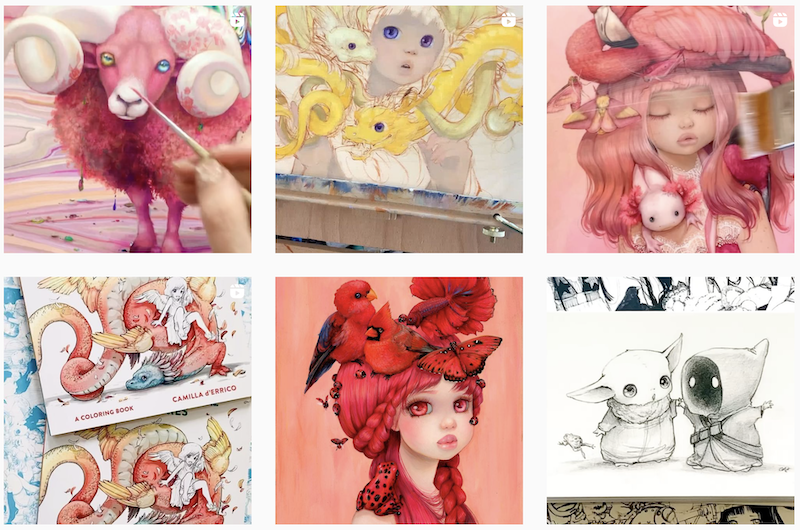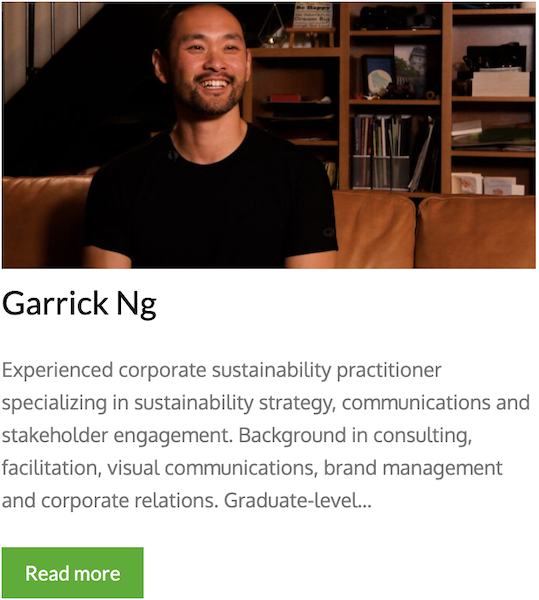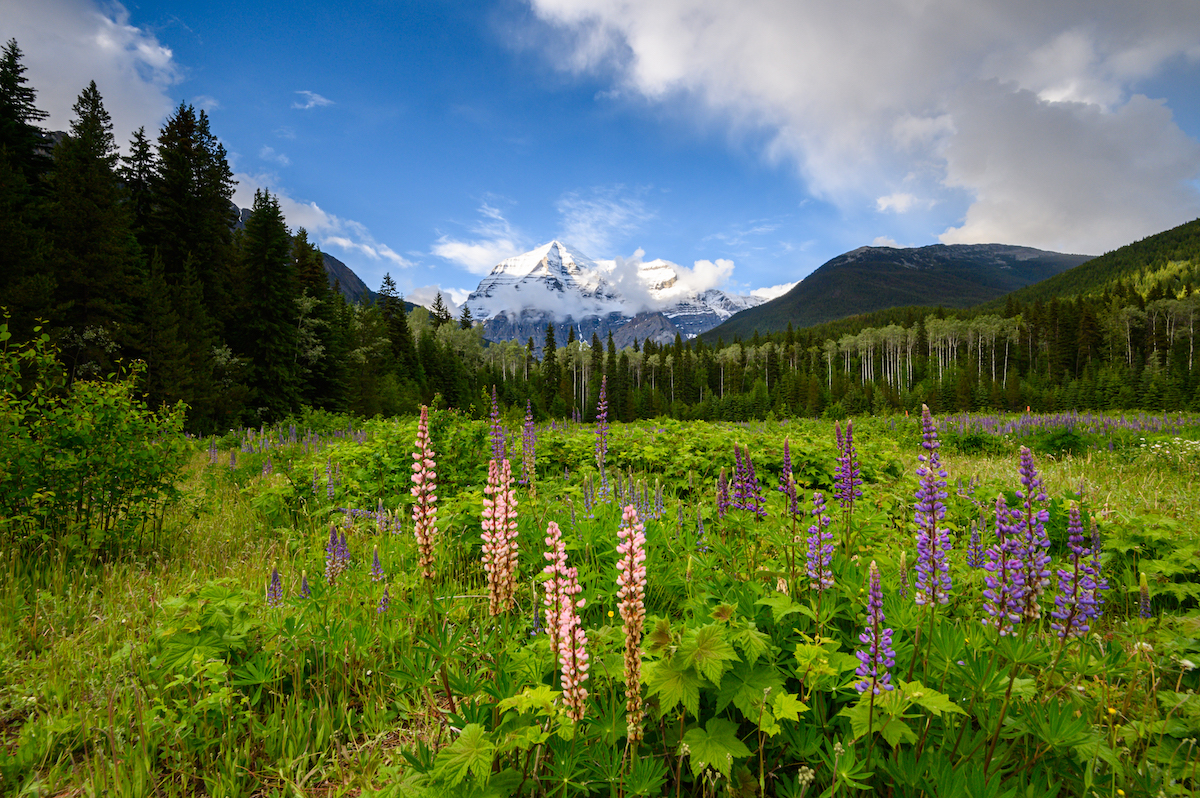The System of Things
Chapter One
What’s a story?

A book or movie, sure, but what about a piece of art?
A sketch? A painting? A sculpture?
How about a photograph?
Or an item of clothing?
Or a beautifully plated meal?
Each, in their own way, tells a story. A visual story.
“It’s a cliché, but a picture says a thousand words because you can see and learn so much from a single photo. It does the work for you, so you don’t need to spend all that time to write up a scientific journal article or something like that. A photo can do so much and can convey, most importantly, emotion.”
Urban planner – and visual storyteller – Victor Ngo is right. Whether we’re talking a photograph, a work of art, a fashion line or a plate of food, visual art is a powerful tool for storytelling.
Victor adds, “You can read something in an encyclopaedia, but that is not going to resonate with you. If it’s in a story format, whether it’s visual or verbal, that can have some pretty profound impact.”
But it’s even more than that, says art innovator Jerry McGrath.
“The role of the arts is to help people make sense of the changes that are happening.”
Change, at its most basic, is chaotic and confusing. It can be overwhelming. It can be divisive. It can be downright disempowering. Especially when it comes to the changes facing nature.
To make sense of that? To uplift and empower? That’s not only the role of art; it’s the imperative of art.
And it’s the irresistible opportunity that has driven the work of Camilla D’Errico.
“For me, I want people to remember that, and to celebrate it. I just did a recent painting called Mother Nature, or Gaia, and I wanted to show that her lifeblood gives this planet the pollinators, the life. But she is in the form of a women because we are part of that.”
Camilla is one of the world’s most successful artists.
“My evolution to where I am now has been crazy. I started in 1998 when I went to Comicon to be a comic book artist. That’s what I wanted. I wanted to do North American style comics. And then, at some point, Sailor Moon became a huge influence and anime took over my life.”
And Camilla has taken over anime, becoming one of the most celebrated pop surrealist artists anywhere. But what makes Camilla’s art unique is not only her style, but also the prominent role nature plays in her work.
“A lot of people come up to me and are like, ‘oh my god, I love octopuses’, or they’re like, ‘I love zebra sharks; I’ve never seen anyone paint zebra sharks’. So, I’m also bringing that to peoples – creatures that they’ve just never seen.”
In other words, Camilla’s introducing nature stories to new audiences and in new ways through new mediums.
“Art is so powerful. It’s visual; it’s impactful. You do one image and that will be seen by thousands of people and it will strike a chord with them.”
Camilla’s love for nature stems from her upbringing – having been raised on a farm in rural British Columbia. But her inspiration for making art her career? Camilla says, “I have to give it up to Little Mermaid because it was when I was watching it that my mom mentioned someone drew that. And it occurred to me that someone got paid to do that. That’s it! That’s all I wanted to do. If you can pay me to draw, that’s what I want. And, of course, Little Mermaid is all about the ocean and being environmentally conscious too, right? I mean, you’re ‘part of the world’.”
And Camilla became determined to tell visual stories about nature that could inspire others to care and act.
“When you put the art out there, it is interpreted, of course. And everything is interpreted differently. But when you put out a message and people will listen to it. I think that if you put anything out into the world, people will connect with it.”
It’s why Camilla believes visual art – visual stories – can help shift society’s narrative. It’s why she believes, even when the message is subtle, art has the power to transform society’s story for the better.
“One person can change the world. Look at Stan Lee. Imagine if Stan Lee decided to not be a writer. We wouldn’t have Deadpool; we wouldn’t have The Avengers; we wouldn’t have any of this stuff. And imagine if one person stands up and says, ‘I’m going to save the planet; I’m going to do it; I’m going to do it this way’.”
Garrick Ng agrees.
“Some of the most important environmental movements have been triggered because of photo journalism and conservation photography.”
Garrick’s the former Managing Director of Artscape Daniels Launchpad – a Toronto-based hub for creators of all stripes. Garrick’s also launched businesses and helped corporations advance their brands.
But no matter his focus, the one constant for Garrick? Visual storytelling.
“I think I kind of fell into storytelling somewhat accidentally. I started off in the corporate world and whether it was government relations or marketing, one could say that is storytelling in some ways. But, really, the opportunity to not work off marketing briefs and spend time in the field with your subjects – be it nature, animals, people – it really was a switch for me.”
Why? Garrick says, “It’s an opportunity in one small way to be a portal to what is out there, but also what’s at risk. You set foot in these environments; it changes you. It gives you a sense of how small we are in a literal and figurative sense. And how grand and important these ecosystems we rely on are.”
That matters. And though there are many visual art mediums that can tell the stories required to spark connection and action, for Garrick, he’s a believer in the power of film.
“You’ve got both images – images that move; you’ve got the ability to layer in sound; you’ve got people’s voices; you’ve got the ambiance and the environment in which you’re filming. And never mind the opportunities in post-production to craft a story. There’s just so many variables that excited me, and the more I started to experiment with the moving image, the more I got kind of drawn into that world of, hey, there’s something here.”
Yet the medium matters less than the message, argues Garrick.
“Now, more than ever we need a way to connect with an audience. It’s rare that you find a piece of media that really grabs you, and when you do it’s typically because that truth or that authenticity just leaps off the screen. Whether it’s the person or the environment that captures you and sucks you in, that’s what makes you pay attention. And that’s the power of storytelling.”
Which isn’t to say all art – all stories – need to have some higher aim. They don’t. But conversely, art and story can do more than simply entertain.
“I’ll get people, viewers, that literally come to me in tears because I’ve awoken something in them, or affected them in a way that, in all my years of writing 100-page PDF strategy reports, I never elicited that reaction.”
It’s why, when facing a biodiversity crisis, our best hope isn’t necessarily science: it’s art.
“In this environment, we have to try to break through with a story.”
After all, Garrick says, “There’s something there that reaches into us in ways that words alone can’t do.”
Which makes sense when you think about this: only 7% of all communication, according to research, is done with words. The rest? The stuff art is great at: tone and body language.
It’s how, without words, animals are able to convey their message – to each other and to other species.
And just as animals don’t need words to convey how they feel, we also don’t necessarily need words to explain our fears and hopes, our concerns and ideas.
Indeed, if our responsibility as citizens is to be better stewards and to find that better balance between people and nature, in many ways our first step shouldn’t begin with cold facts, but with tangible emotion.

And if emotion matters? Biodiversity advocate Harvey Locke argues we have no better tool than visual art.
“Some theorists have said that nature is the foundation of art. But nature’s the foundation of everything – including you and me, because we’re just carbon walking around. That’s all we are. It’s in seeing that and expressing it visually that helps people make the emotional connection and it bypasses the brain circuitry into the heart. It says all of those things about beauty that matter.”
Harvey continues, “It’s like love. Love is not rational. Love doesn’t pay the bills. But without it, we’d be personal catastrophes. Life’s not all about money and practicality. There’s this other thing, like, ‘Wow! My mind is being blown! Oh my god, I can hear things and listen to the squirrel chatter and birds sing and watch that river run over the rocks and hear the rocks rumble. Oh my god, there’s something going on here that I’m not causing and that isn’t coming through a screen and isn’t human. It’s more than human and yet it’s entirely embracing of my humanity’.
“That’s the magic of nature. Art helps to express it.”
Just remember, art isn’t just a painting. Art is also food and photographs and fashion and film and so much more. And by the same token, each art medium is also a powerful storytelling platform.
If we choose, each medium – each story – can be a powerful tool that makes us rethink what we know and reimagine what’s possible when we try to be different, when we try something new, when we try for something better, together, for all.
That’s why this story matters.
That’s why your story matters.
“Recognize that every little drop does matters; every little story that enters into mainstream thought and conversation matters. So, get out there and try to be that little thought bubble or drop in the bucket because together we can definitely make a difference.” – Garrick Ng | Storyteller



